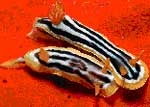The name “hippopotamus” comes from the Greek meaning “river horse”. However, hippos are not related to horses. Their nearest living relatives are pigs, dolphins, and whales.
The hippopotamus (Hippopotamus amphibius) can be found in lakes and slow-flowing rivers in Africa. The skin of a hippo will lose moisture if it stays out of the water for too long, especially under the harsh African sun.
This is why this semi-aquatic mammal spends up to 18 hours a day in the water. They come ashore to graze at night.
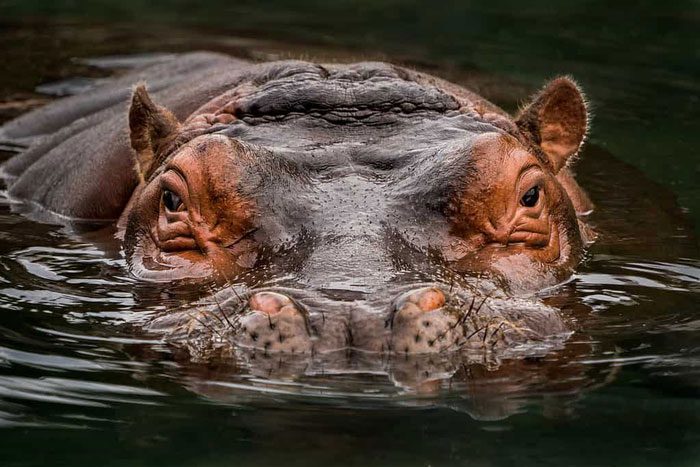
Hippos are large aquatic animals living in Africa. They can reach lengths of 3.3 to 5 meters and stand up to 1.6 meters at the shoulder. A female typically weighs around 1,400 kg, while males weigh between 1,600 to 4,500 kg.
The eyes, ears, and nostrils of hippos are located on the top of their heads. This adaptation allows them to see, hear, and breathe while most of their body is submerged in water.
When fully submerged, hippos close their nostrils and ears. However, their eyes can remain open thanks to a membrane that functions like an integrated protective goggles, shielding their eyes. Mature hippos can hold their breath for five minutes underwater.
Hippos are so accustomed to water that they can even sleep underwater. They have a natural reflex that pushes them to the surface to breathe without having to wake up.
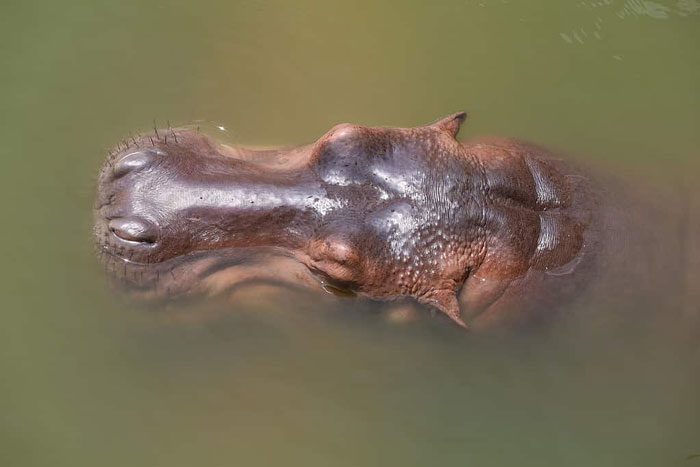
Hippos cannot actually swim, and can only use their legs to touch the riverbed to move. Hippos are very aggressive animals and live in areas with abundant water sources.
But how can this massive mammal hold its breath for up to five minutes? Hippos have an adaptation that allows them to “turn off” their lungs when underwater while still allowing oxygenated blood to circulate. This is why hippos do not lose consciousness like humans when they are underwater for such long periods. While submerged, they move very little to require less oxygen.
However, only adult hippos can hold their breath for up to five minutes. Young hippos do not have the same lung capacity and must surface more frequently. For instance, newborn hippos can only hold their breath for 30-40 seconds.
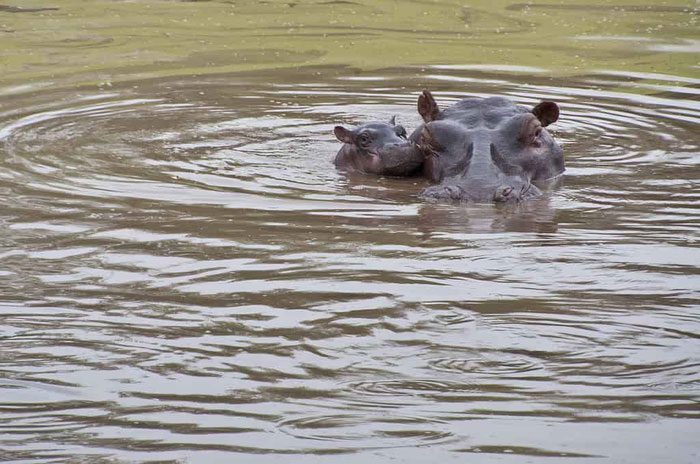
When submerged, hippos can hold their breath for 5 minutes or even longer if needed. Hippos have nostrils located on top of their heads, allowing them to breathe even when the rest of their body is underwater. When hippos stay out of the water for too long, their skin surface secretes a red liquid known as “blood sweat”. In reality, this liquid is neither sweat nor blood; it is red due to the presence of acid pigments. This substance functions as a sunscreen, moisturizer, and antibiotic, protecting their skin.
Hippos usually give birth underwater, so newborn hippos must start holding their breath right from birth. Newborn hippos also nurse while submerged, meaning they will suckle for about 20-30 seconds, then must surface to breathe, repeating this process until they are full.
Many aquatic and semi-aquatic mammals are excellent swimmers, but hippos are not among them. In fact, hippos cannot swim at all; instead, they walk, run, and jump in the water. Their bones are very dense, allowing hippos to sink themselves underwater instead of expending energy to stay submerged.
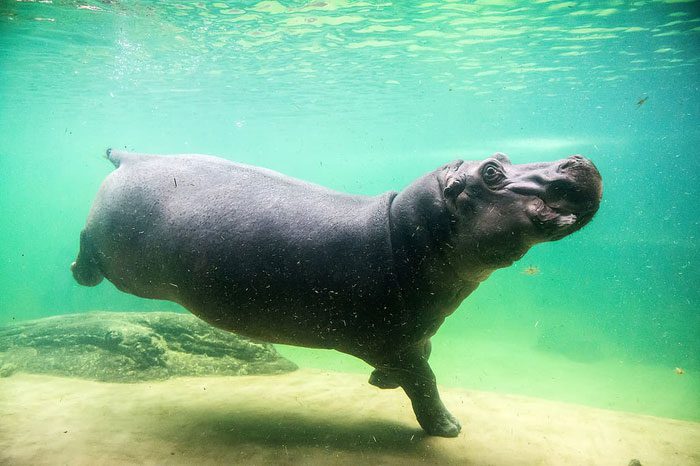
The skin of a hippo is very delicate and vulnerable, cracking when exposed to sunlight. To adapt to life in the water, hippo skin has evolved to be smooth and hairless, reducing drag when moving through water. However, the downside of this skin is the lack of protective layers, making it very sensitive to sunlight, especially the intense rays in tropical Africa. Therefore, hippos need to submerge themselves in water to keep their skin moist, and they never dare to stray far from water sources.
However, because hippos are mammals, they cannot breathe underwater. Ultimately, they must surface to breathe. They can simply walk into shallow areas where they can still stand while their nostrils are above the water’s surface. In slightly deeper waters, hippos can stand on their hind legs, allowing them enough height to lift their nostrils above the water surface. Or, in even deeper water, hippos will rise from the bottom and float to the surface to take a breath.
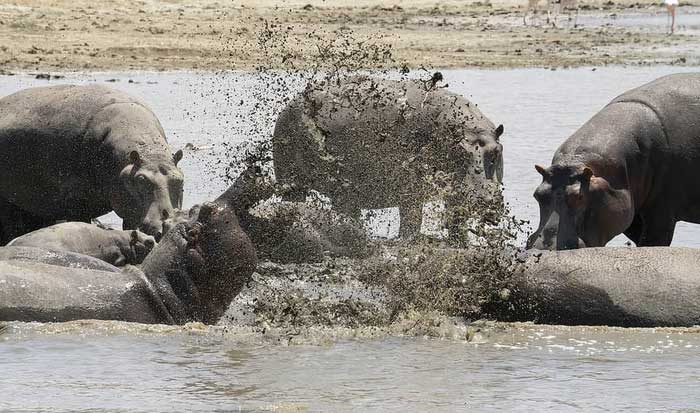
Hippos are social animals that live in groups. Hippo pods typically consist of 10 to 30 members, including both males and females, although some groups can have up to 200 individuals. Regardless of the size, each pod is usually led by a dominant male.
|
Hippos are a large herbivorous mammal living in sub-Saharan Africa. They belong to the family Hippopotamidae and are one of the two surviving species of the genus Hippopotamus. Their name means “river horse” in Greek, as they often live near rivers or lakes and can dive underwater for up to 5 minutes. Hippos have extremely strong jaws that can crush a 3-meter-long crocodile with ease. They are also one of the most aggressive animals in the world, responsible for many attacks on humans and other species. Hippos have a massive, stocky body, gray or slightly reddish skin, and are mostly hairless except for some on their ears and tail. When basking in the sun on the shore, they secrete a red liquid that resembles blood, but is actually a moisturizer and sunscreen for their skin. |










































